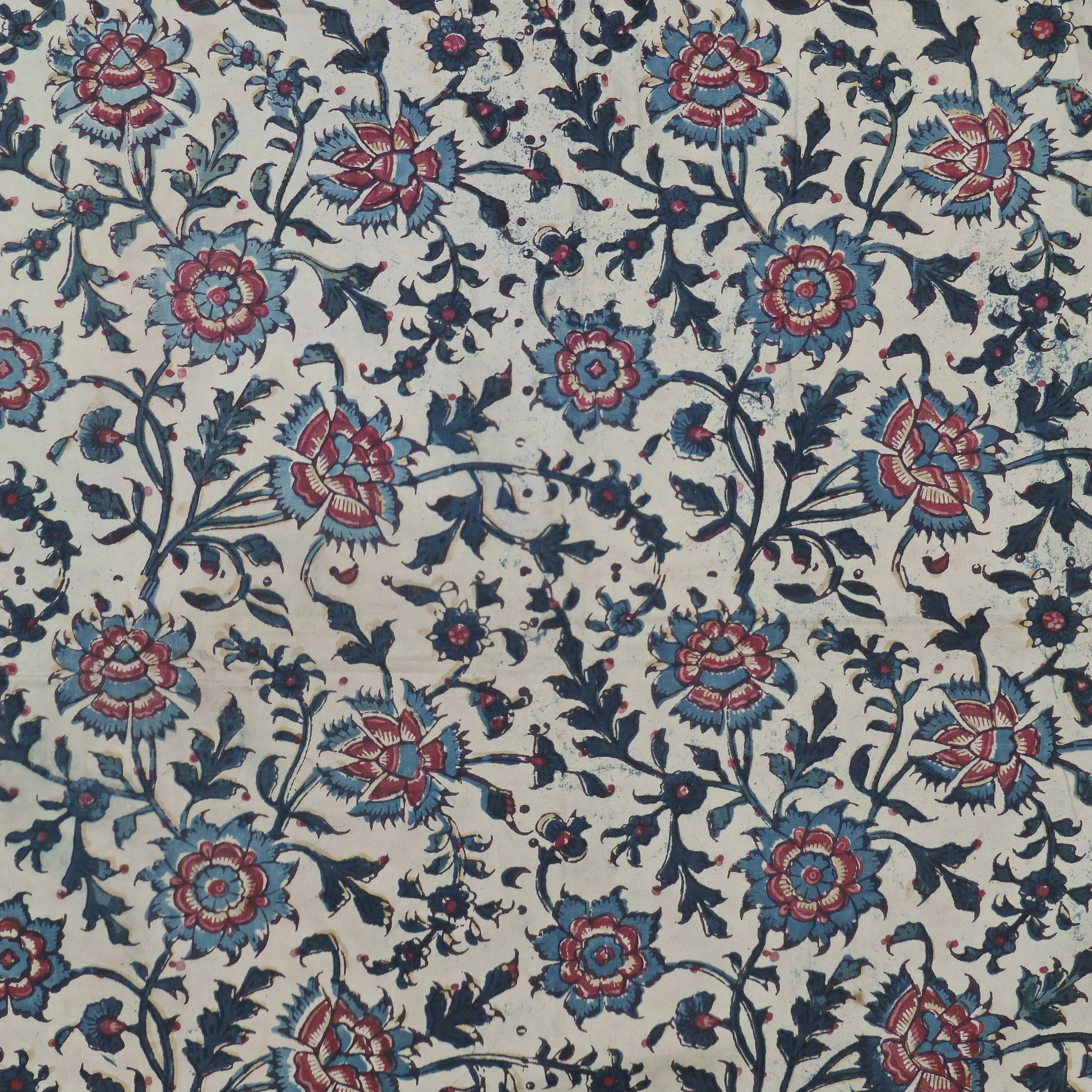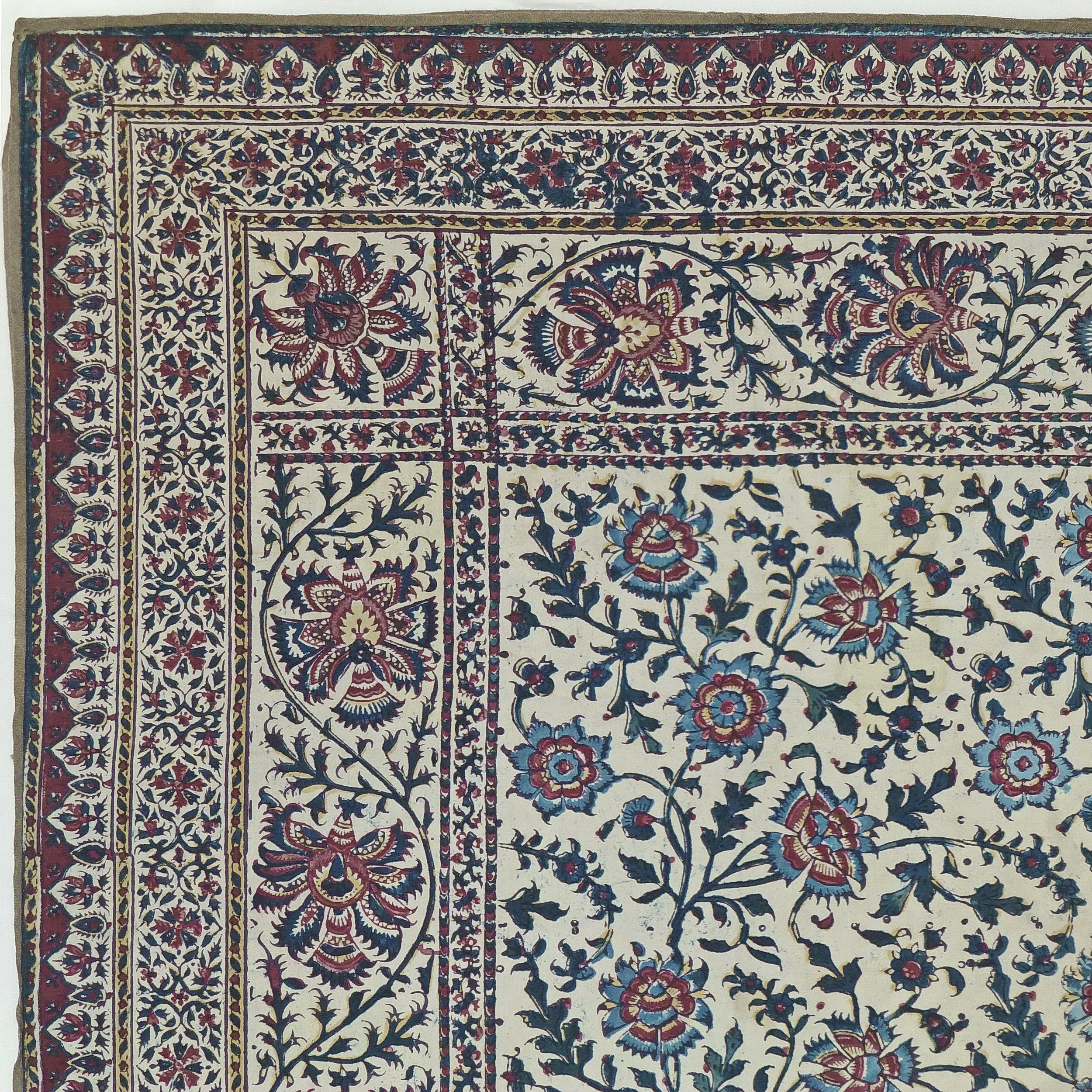A 19th century kalamkari coverlet
Circa 1850-1870. Machilipatnam (Coromandel Coast), or Persia.
Block-printed, dyed and painted cotton. The design of trailing stems and flowers on an ivory ground within a main border of vines and palmettes. With a backing of glazed cotton.
The term ‘kalamkari’ is a juxtaposition of the Persian words ‘kalam’ and ‘kari’, respectively denoting ‘pen’ and ‘craftsmanship’. In the Machilipatnam technique of kalamkari production, by which this textile was created, the complex process of rendering the design is finished with the bamboo kalam.
The popularity of such textiles in Qajar Persia ensured their exportation to that state in great numbers and the subsequent establishment of workshops in Persia itself, with the consequence that the origin of some is hard to determine.
A coverlet in the collection of the V & A, accession no. 5443(IS) , is of a similar format and size, and has an outer subsidiary border of the same design.
113cm (44½”) high and 113cm (44½”) wide.









